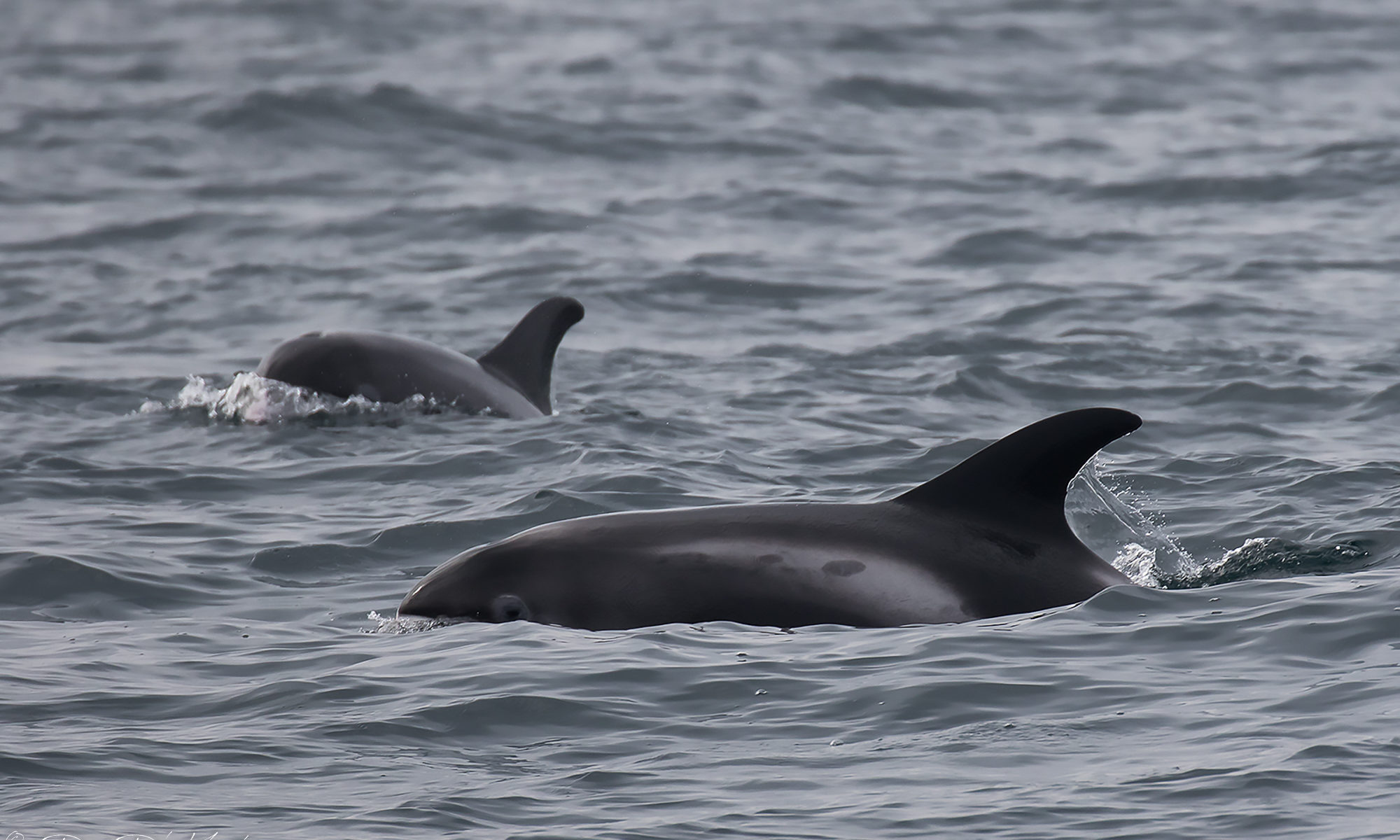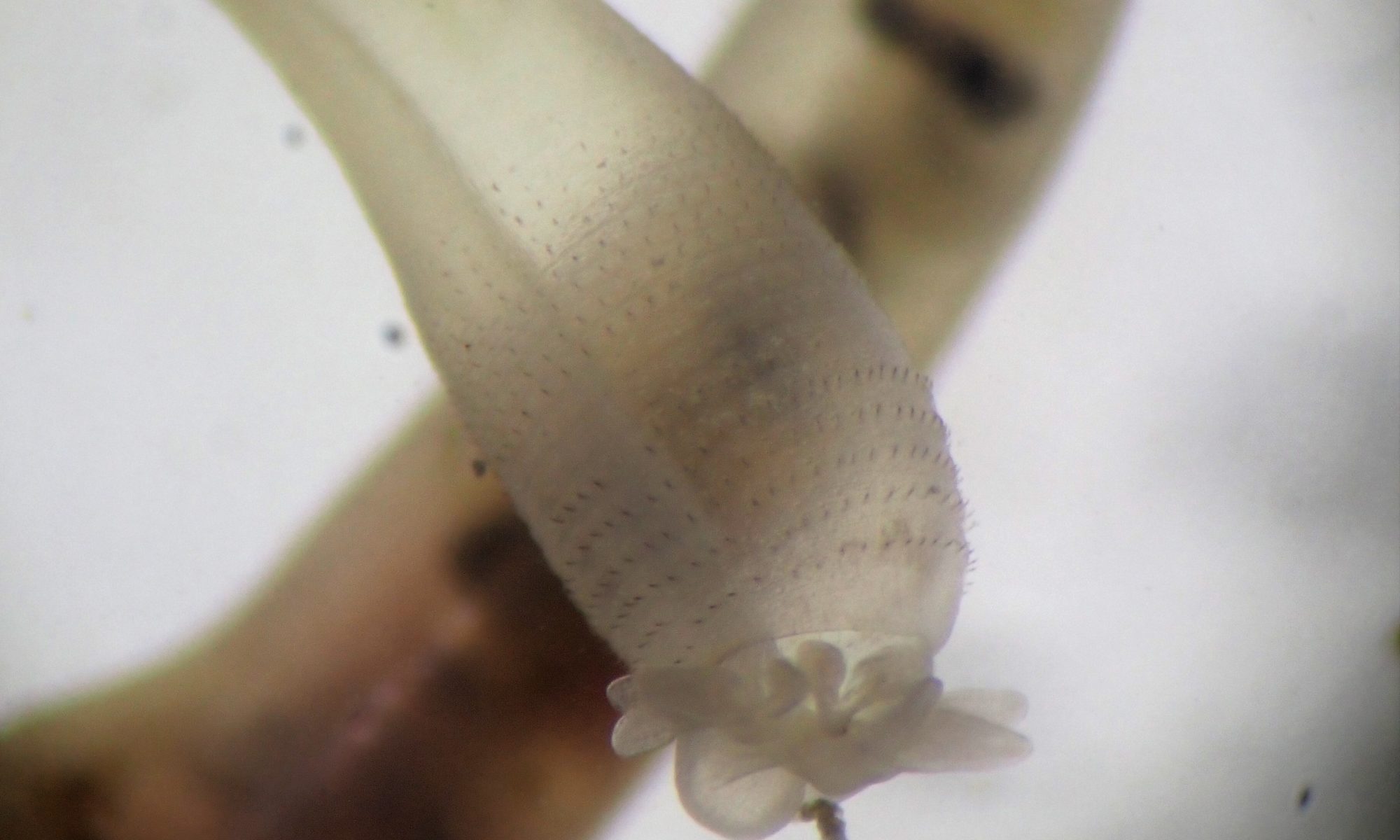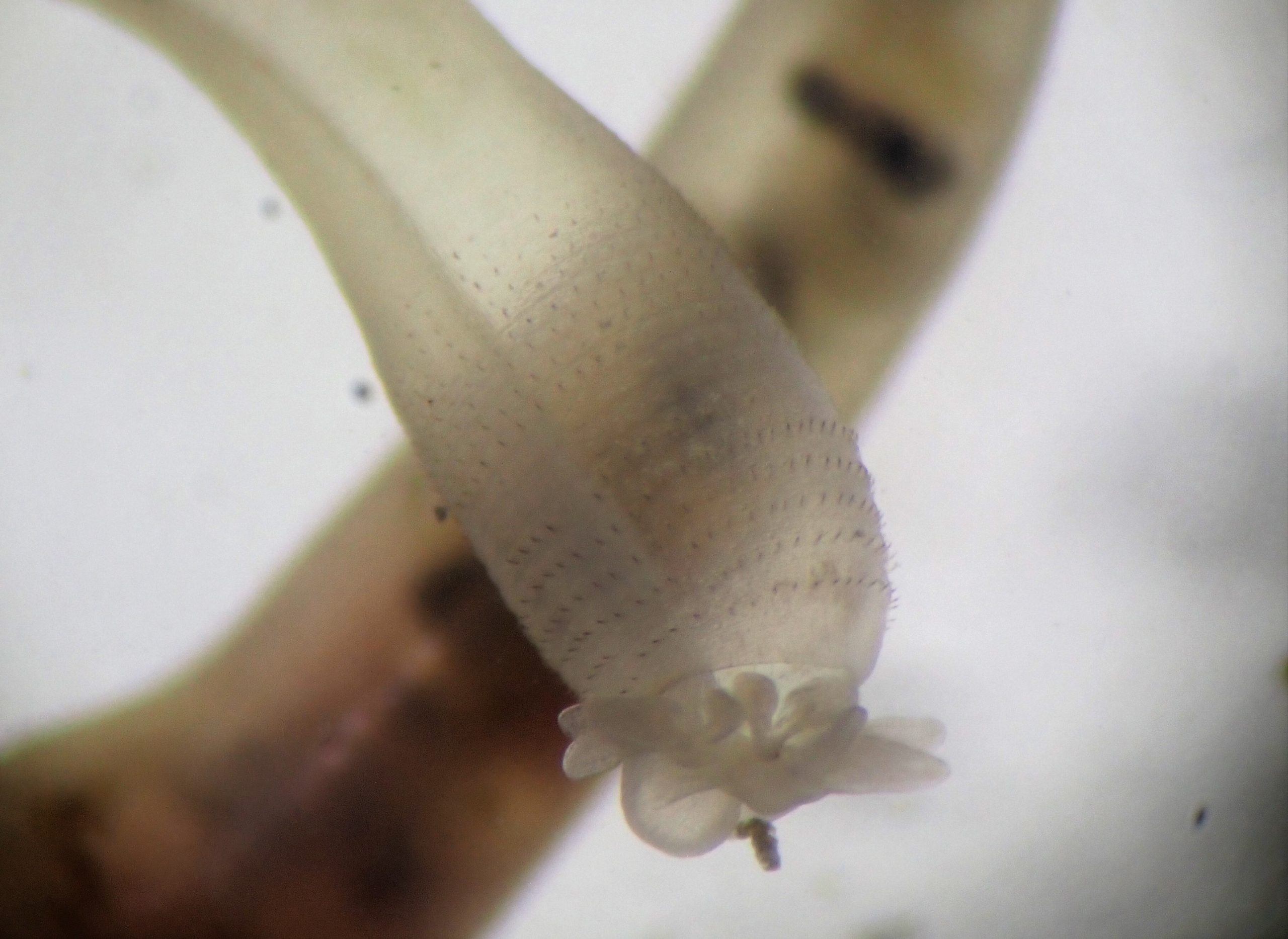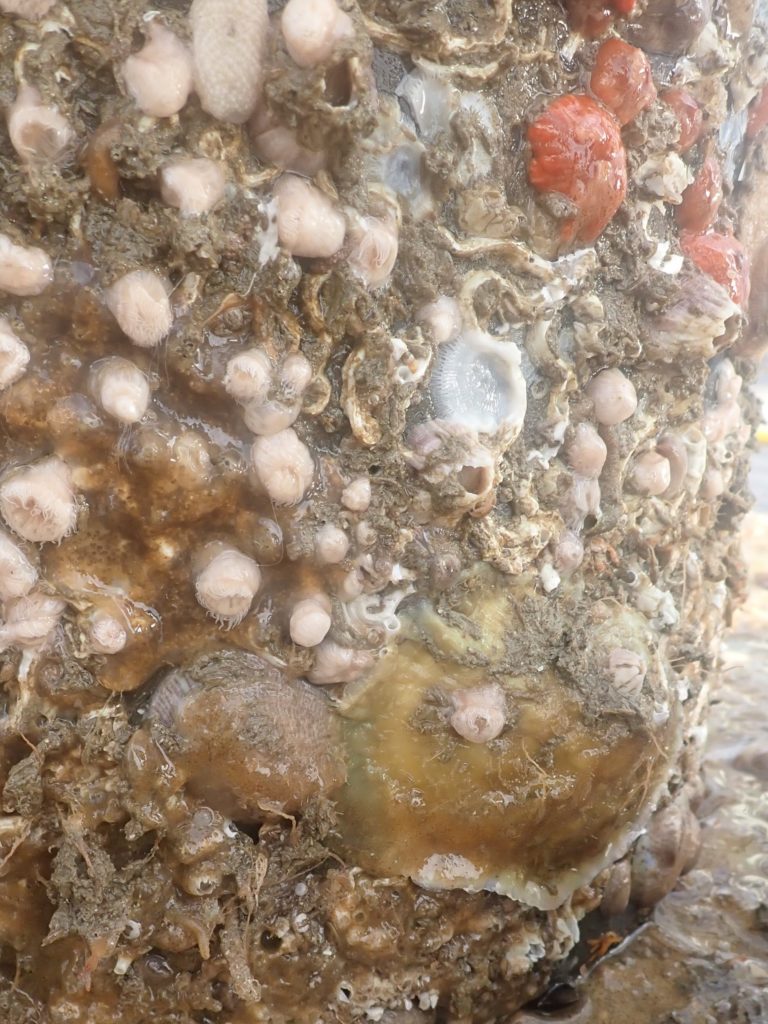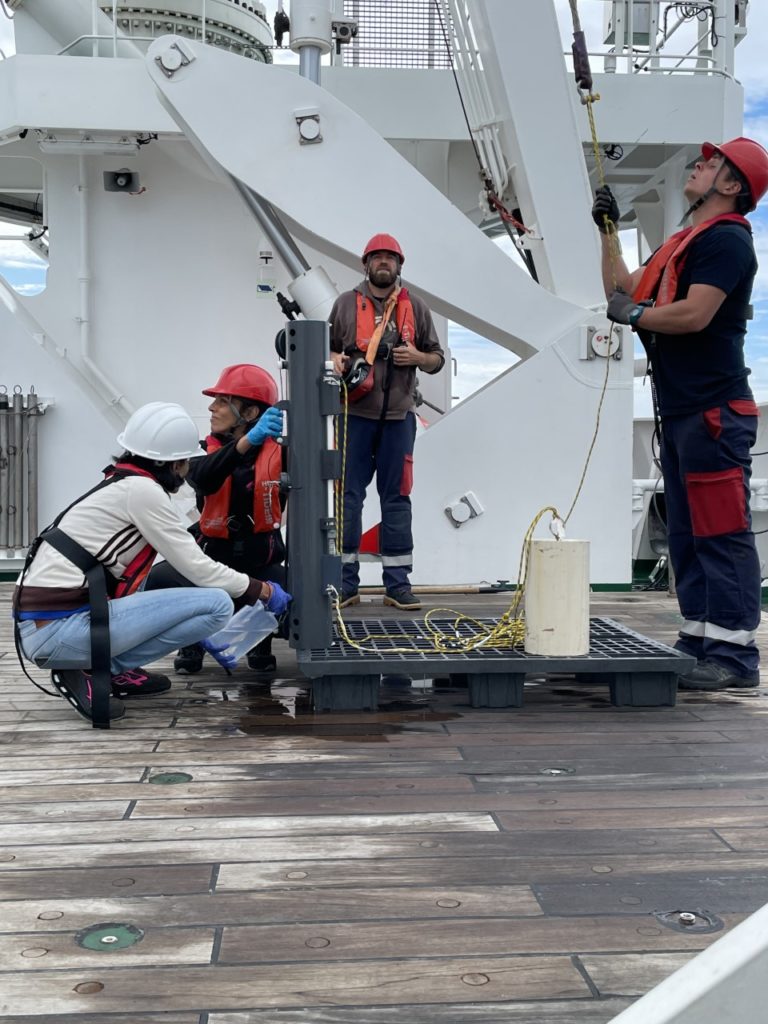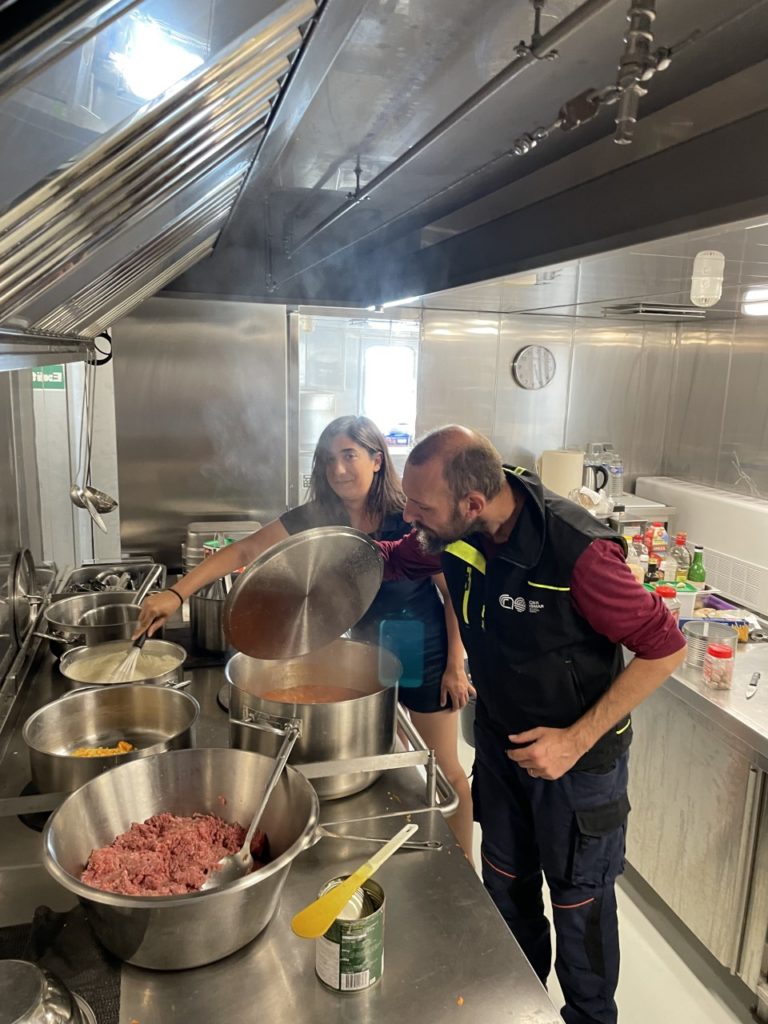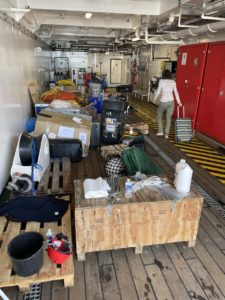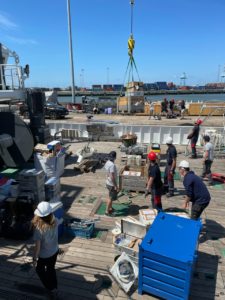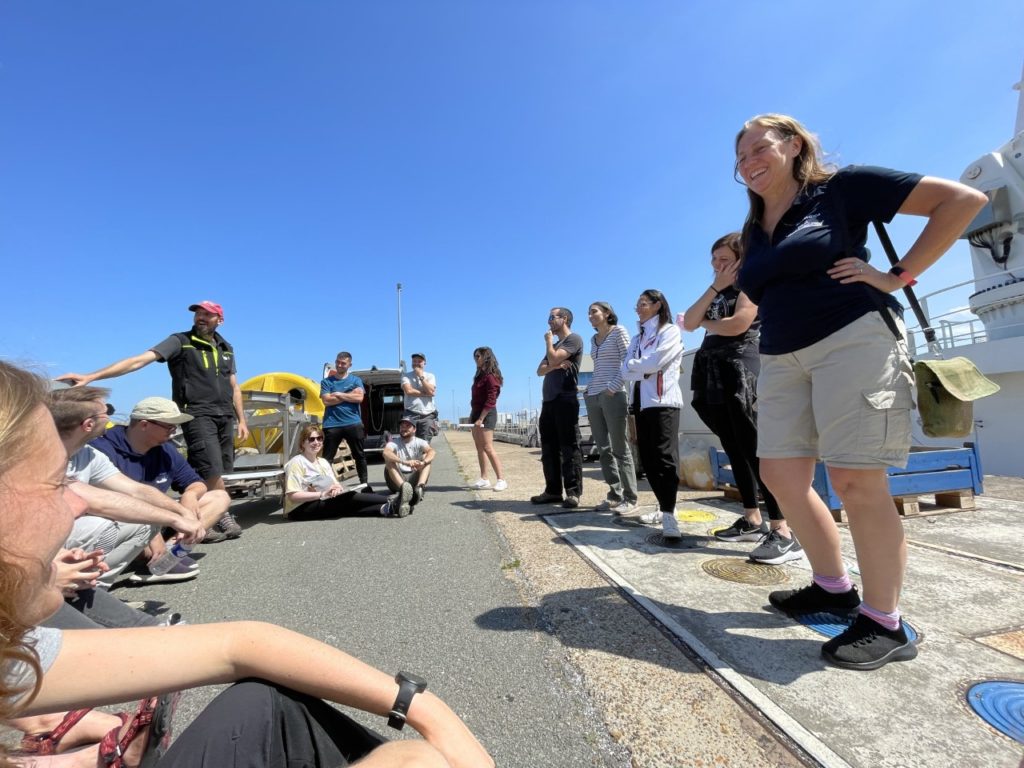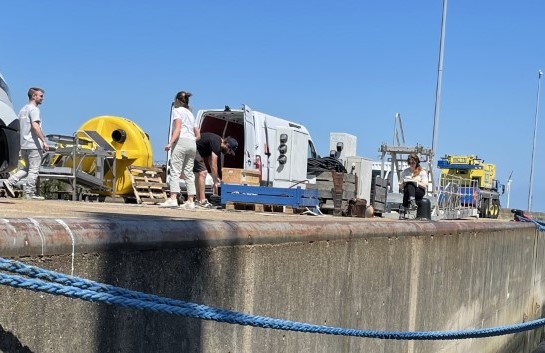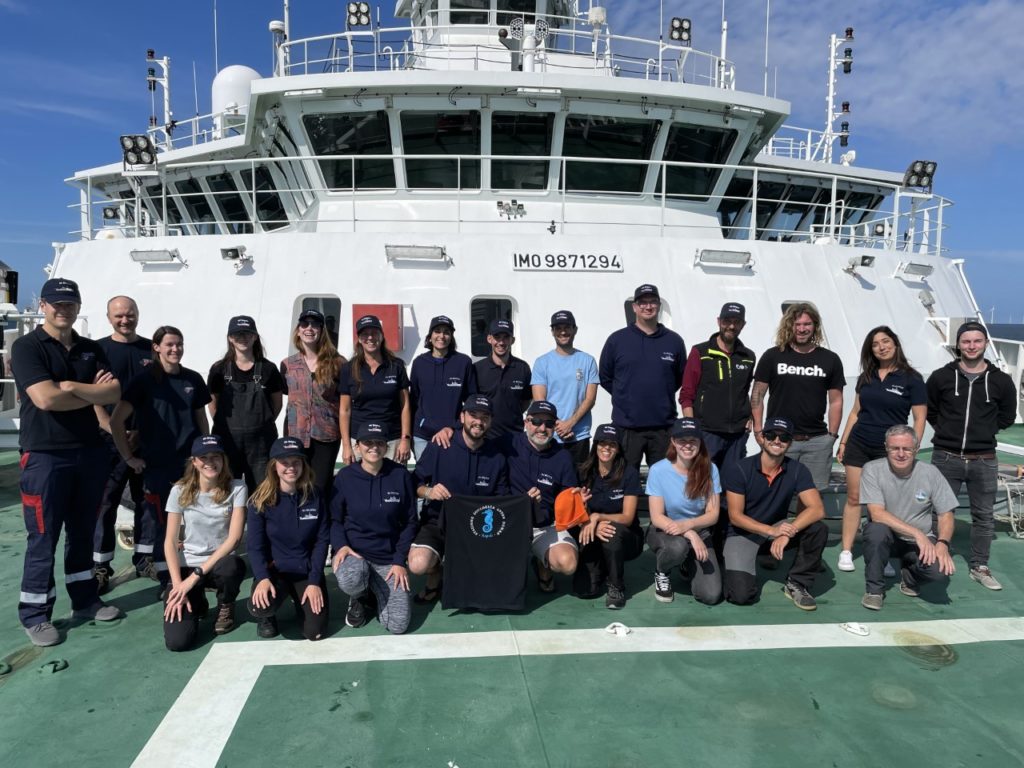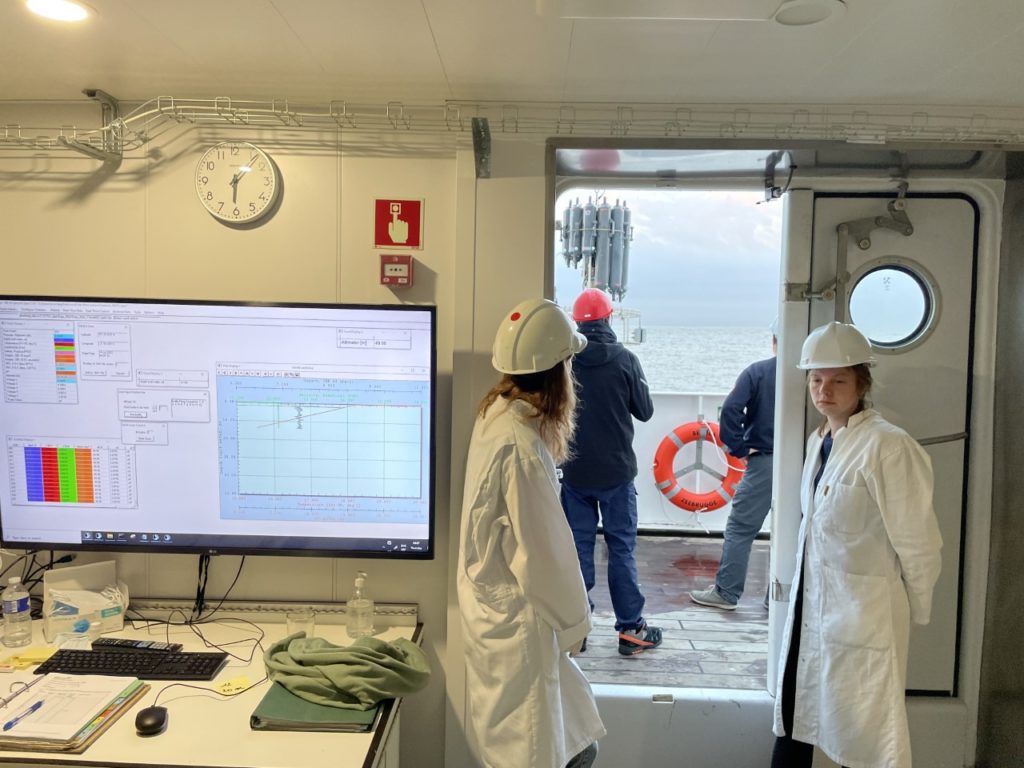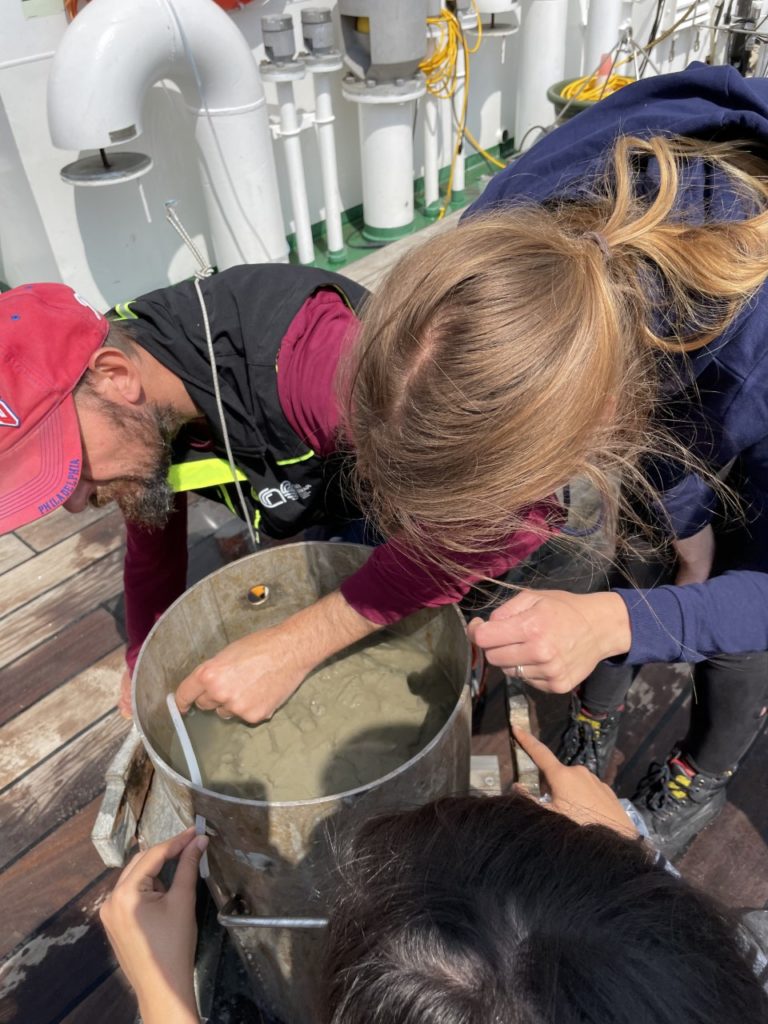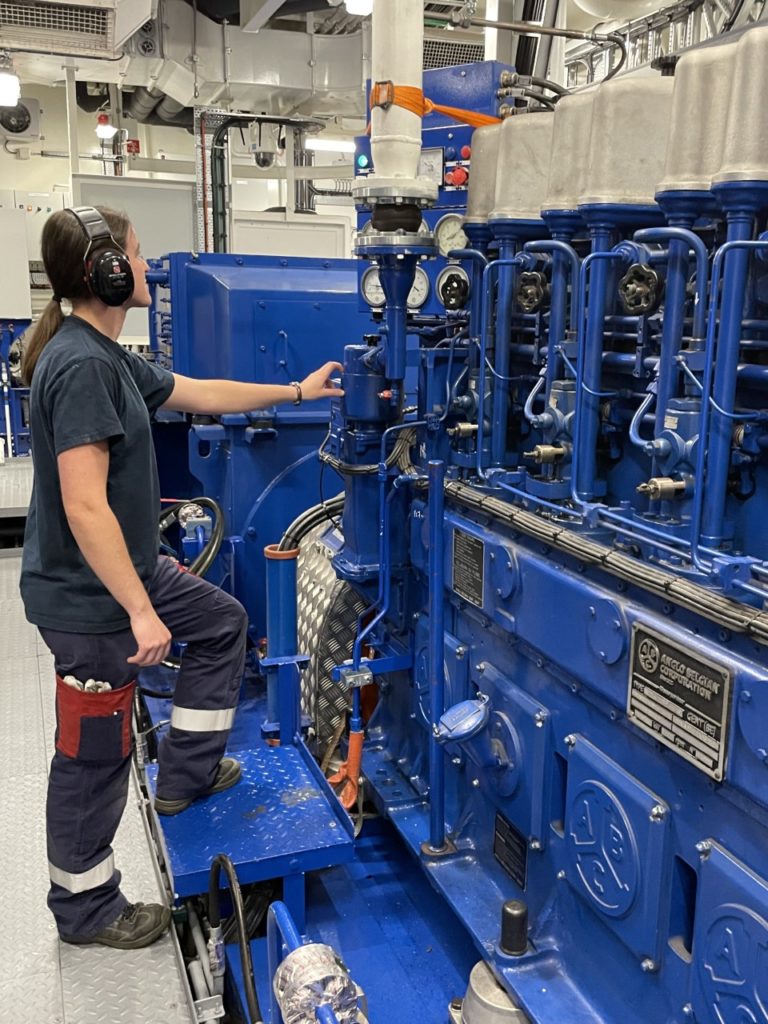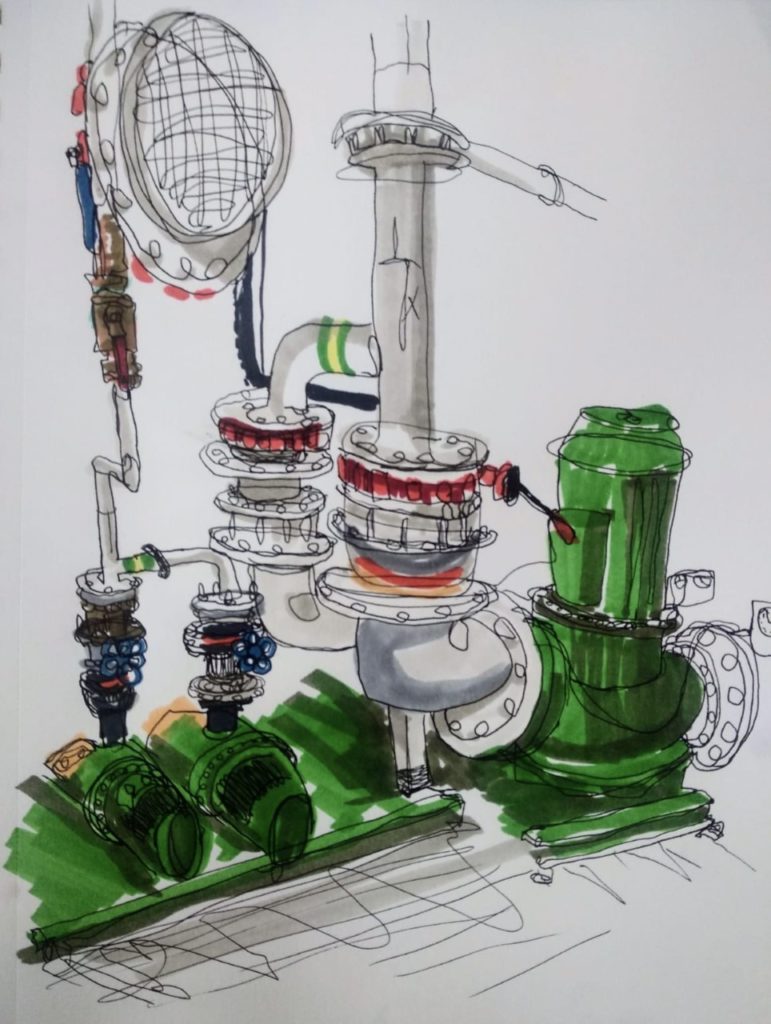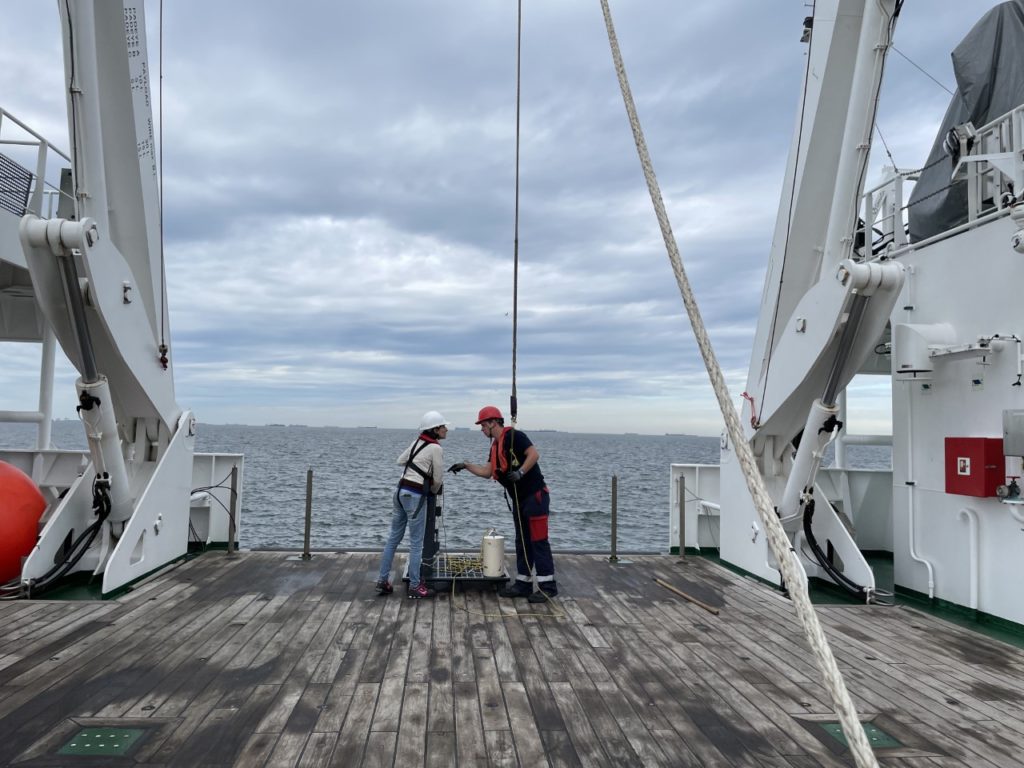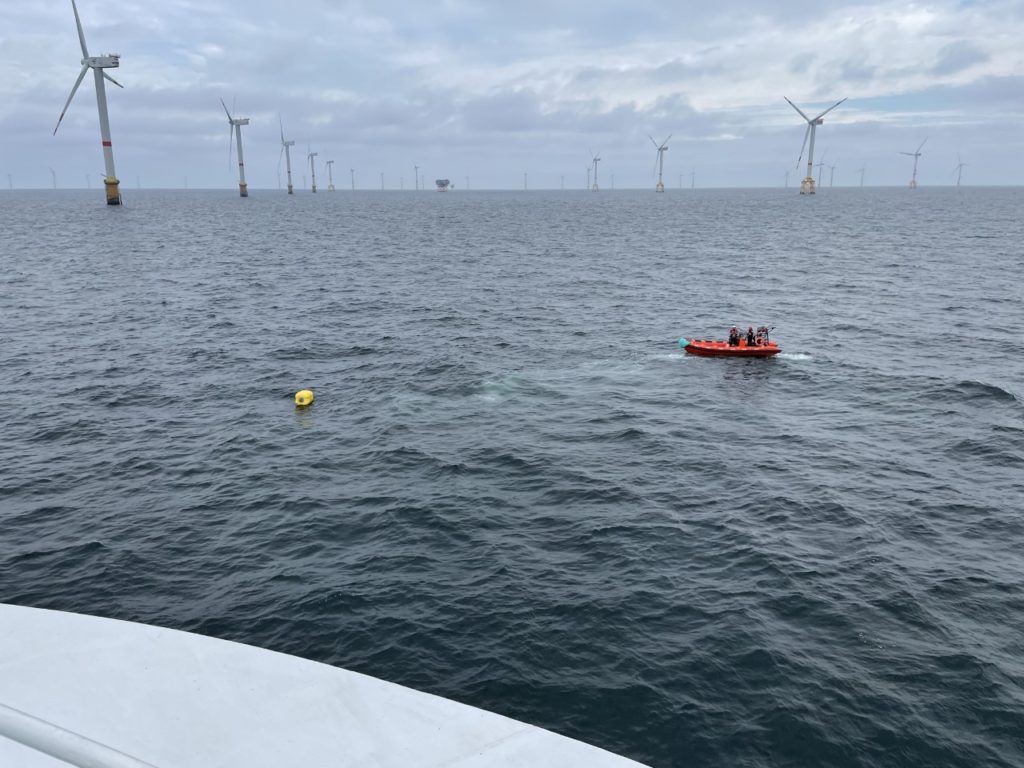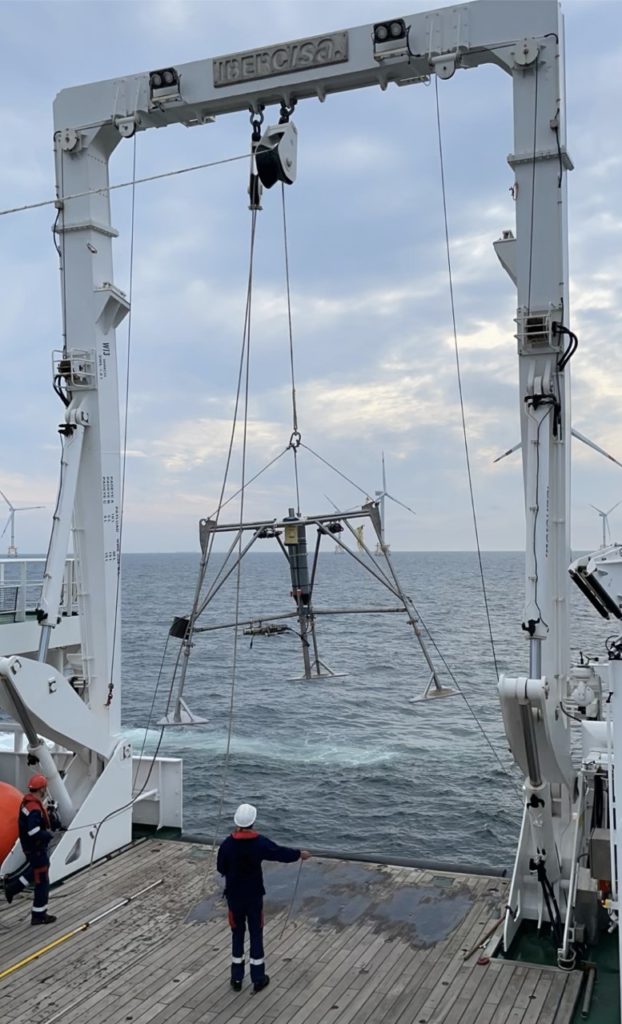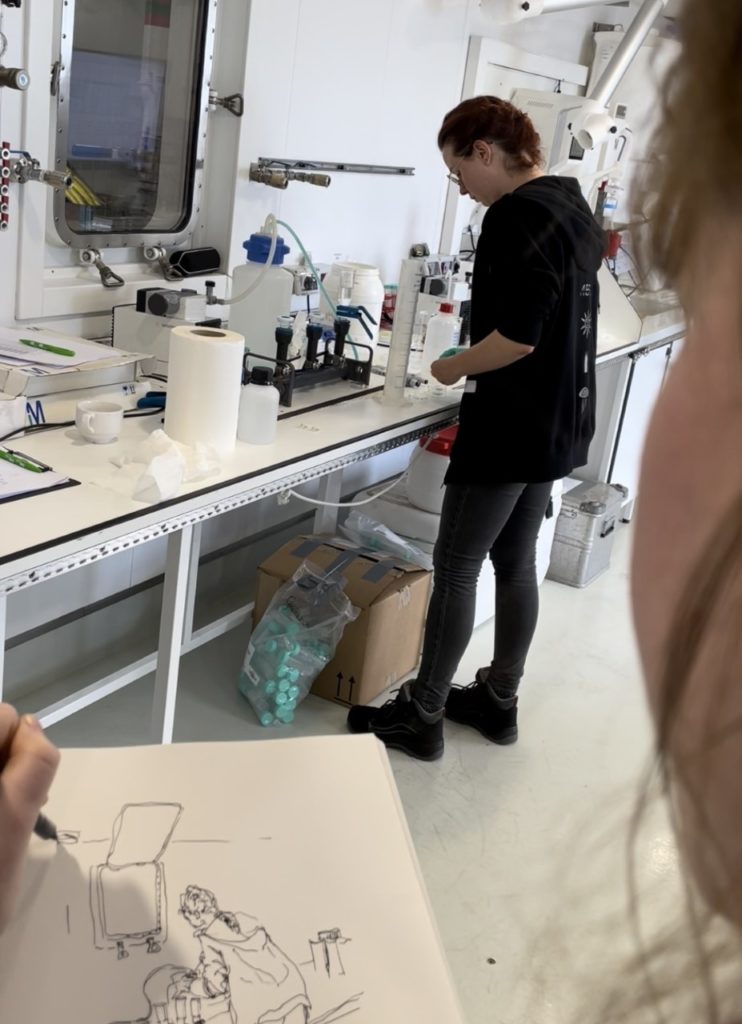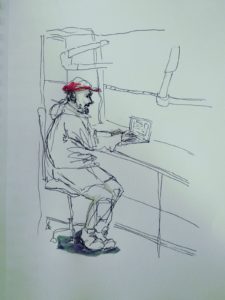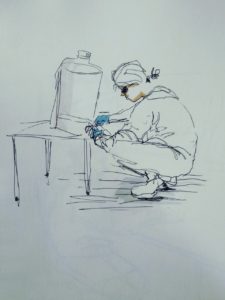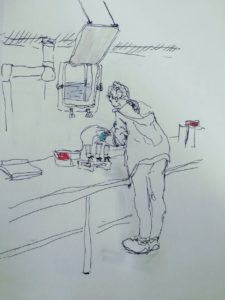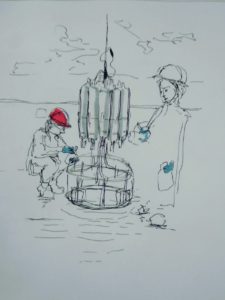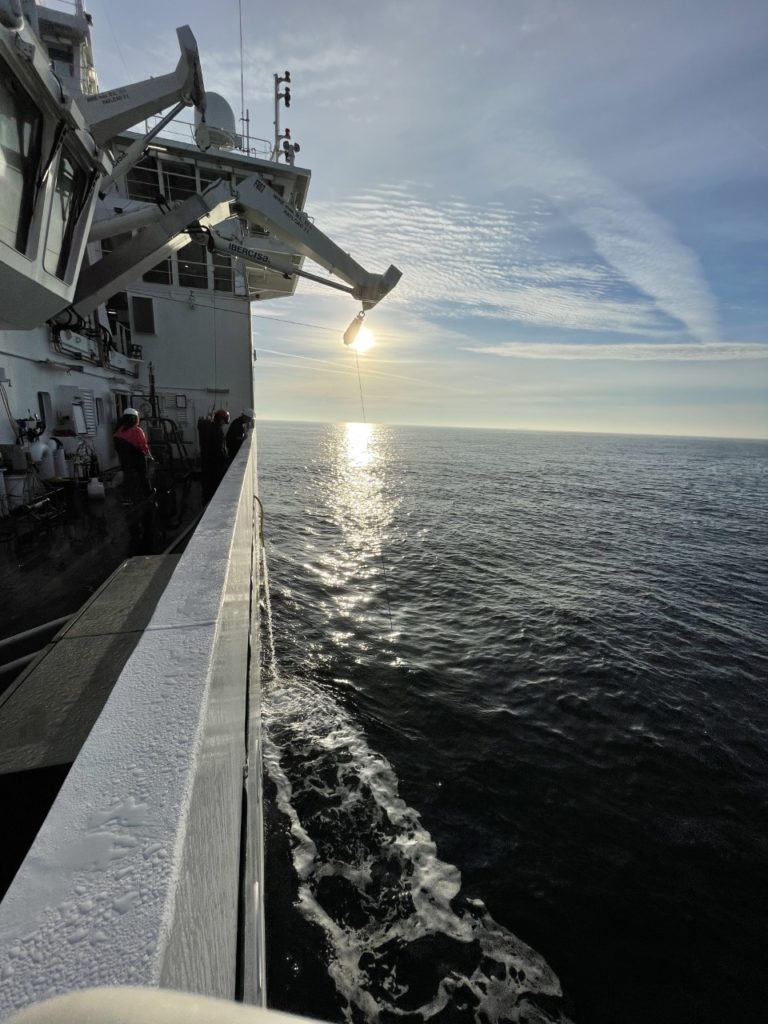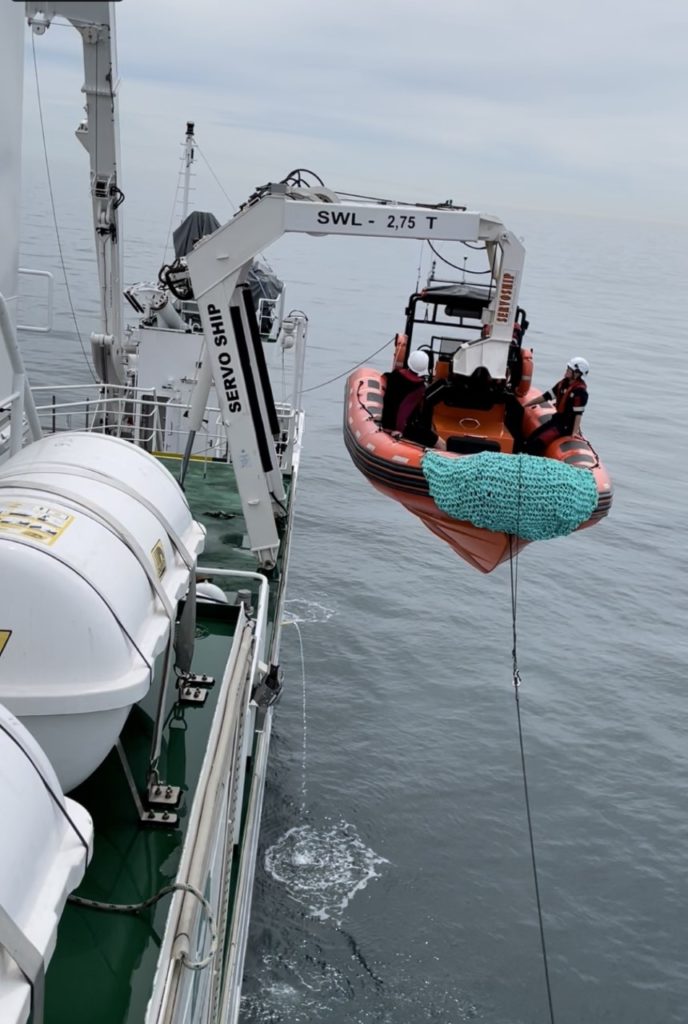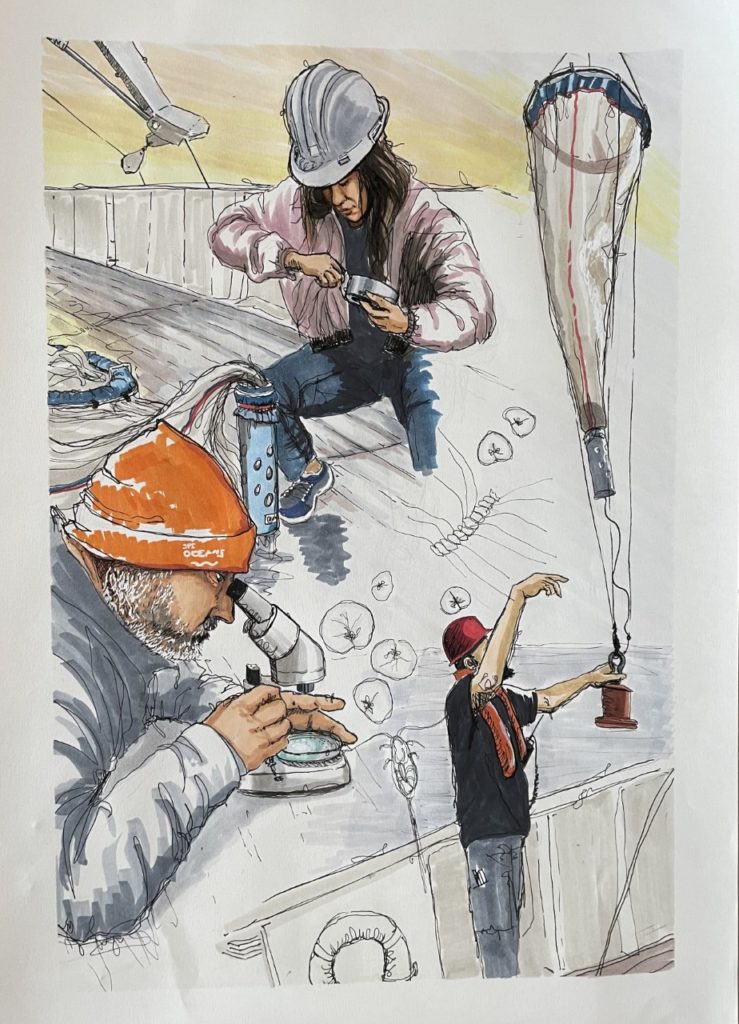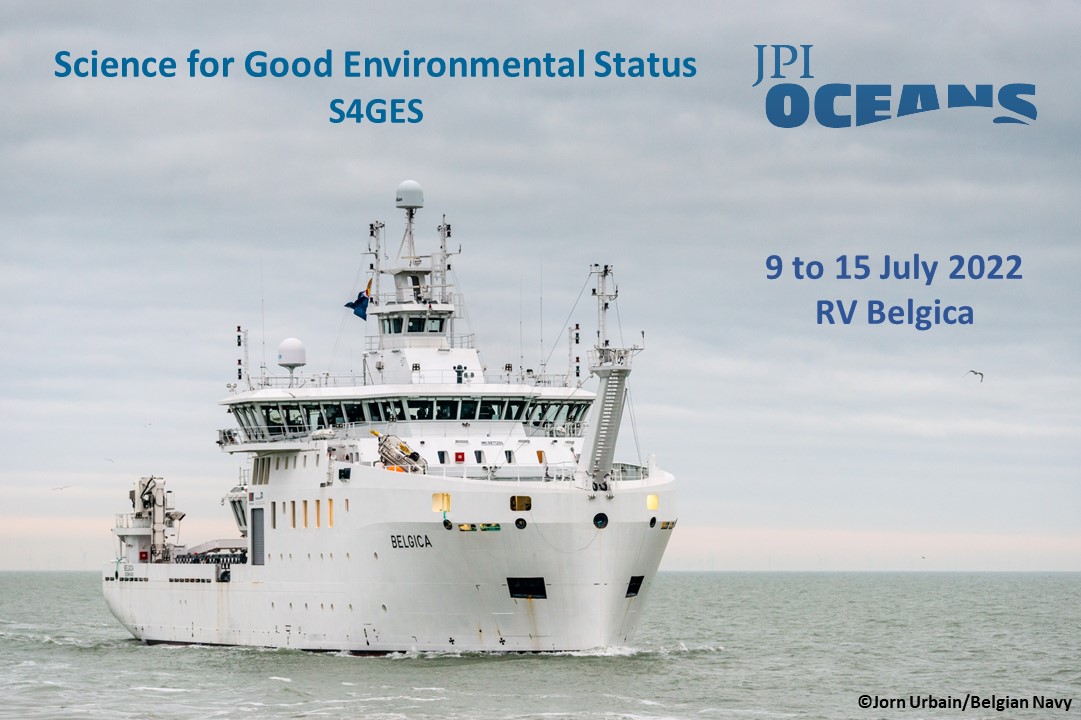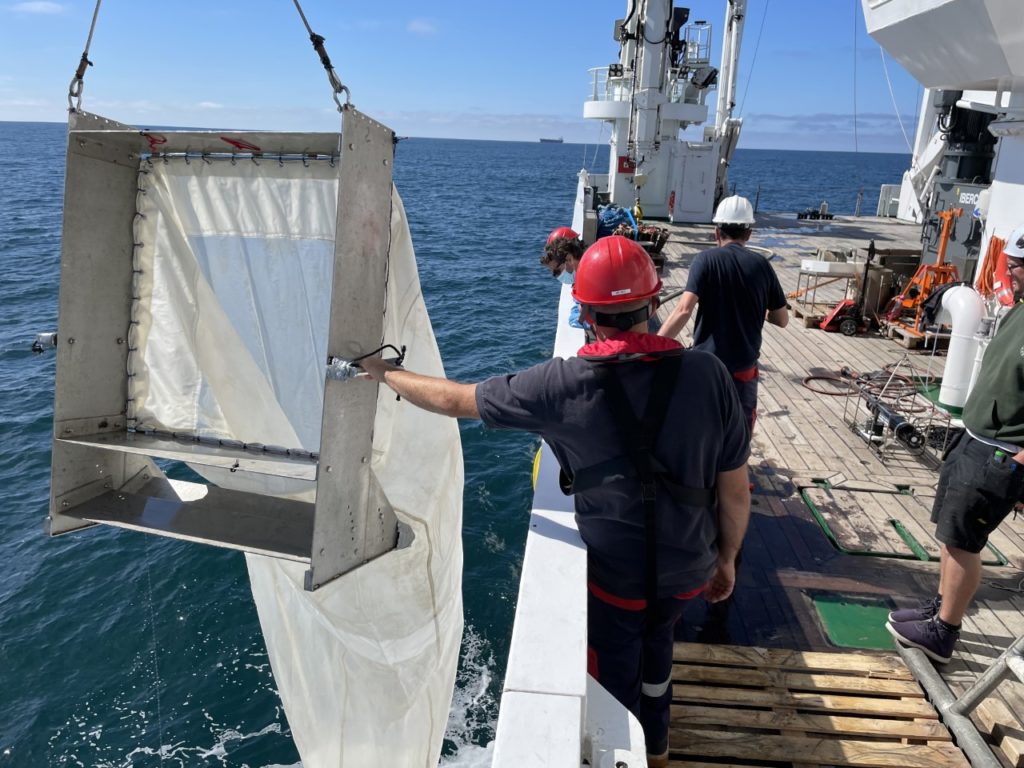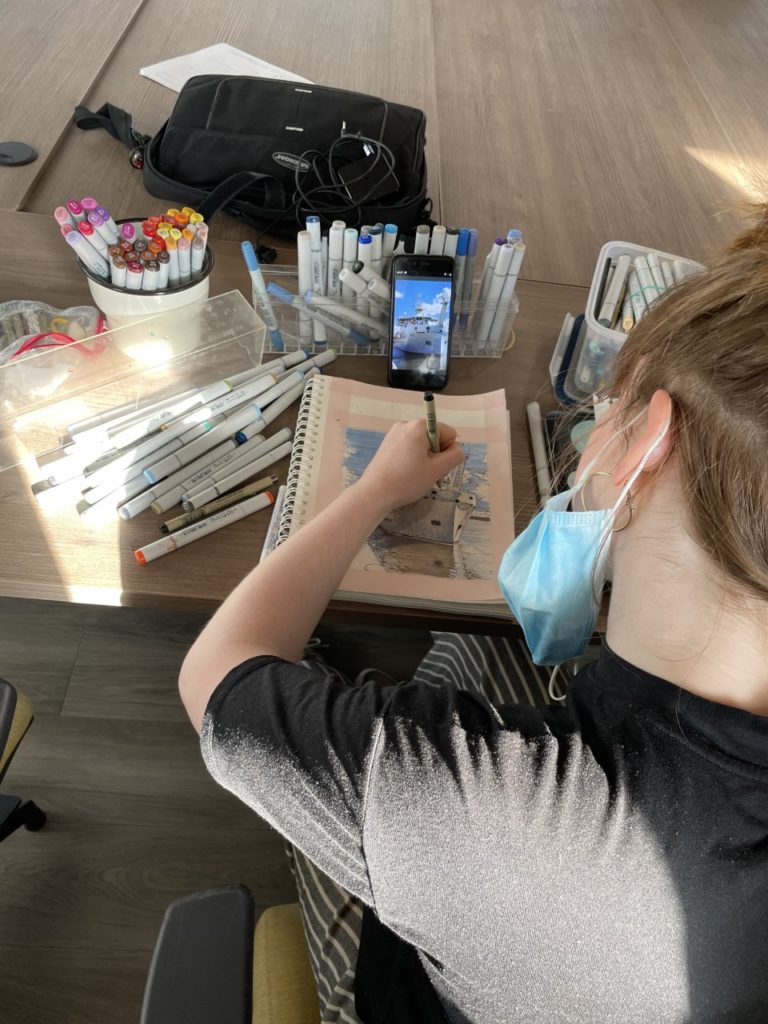After White-beaked dolphins were observed more frequently in Belgian waters in the early 21st century, the species recently became rarer again locally. Indeed, sightings of groups on 23 June and 14 December 2022 represent the first sightings of living White-beaked dolphins in Belgian waters since April 2018. On both dates, the animals were seen from the new research vessel RV Belgica.
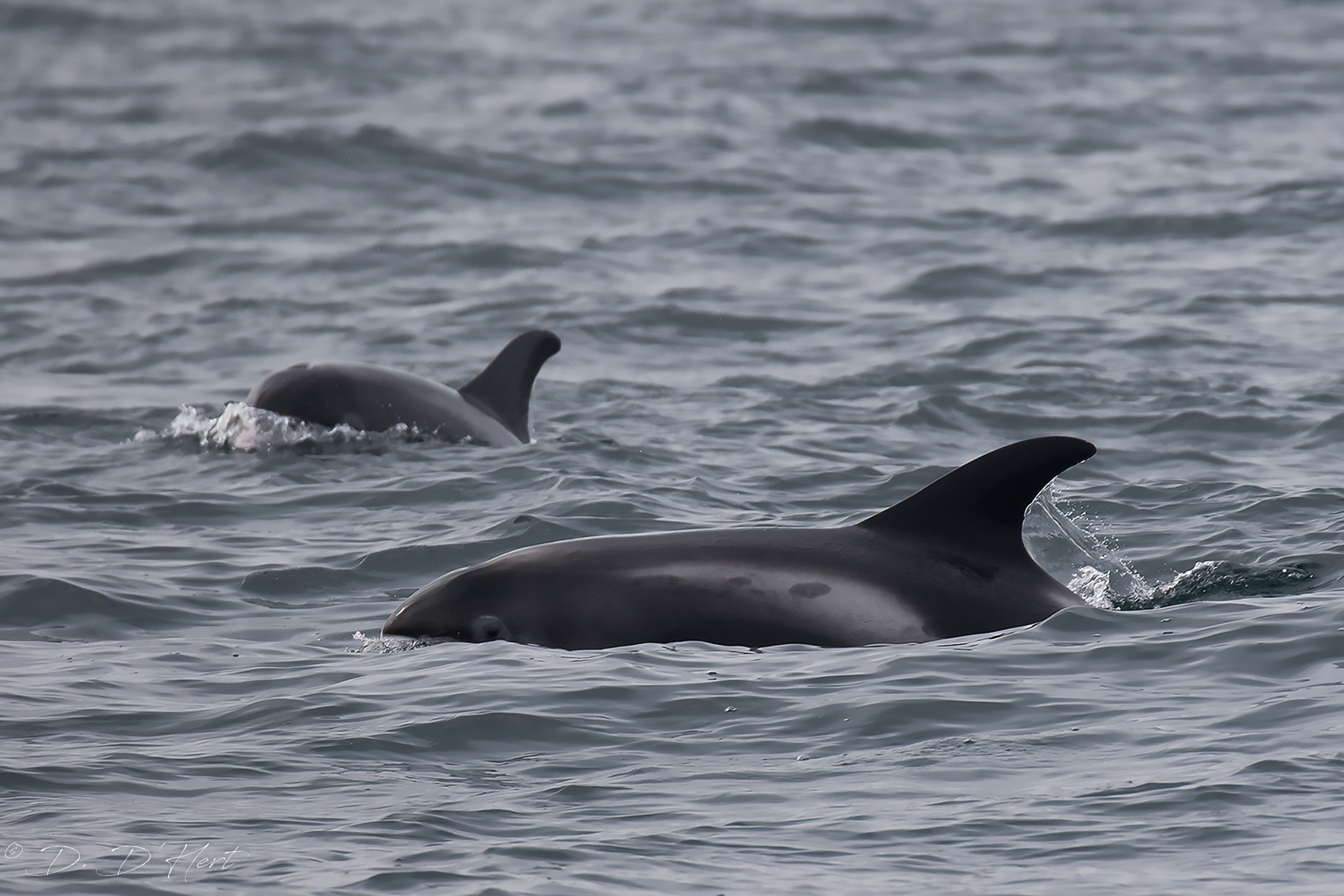
On Thursday 23 June 2022, a group of around ten White-beaked dolphins was spotted from the research vessel RV Belgica in the Belgian part of the North Sea. The dolphins were seen about 5 km off the coast of Knokke, while the ship was en route to her baptizing ceremony in the god city of Ghent. The animals swam in a westerly direction, regularly emerging above the water. Present ILVO researchers identified the dolphins as White-beaked dolphins, which was confirmed by a video that Belgian Navy Lieutenant-Commander Ilja Van Hespen was able to record showing the distinctive white snout and light flank markings with dark saddle.
On Wednesday 14 December 2022, researchers from INBO and RBINS were the privileged witnesses. Initially, some ten dolphins were spotted about 42 km from the Belgian coastline (measured perpendicular to the coast, this was at the level of Ostend), and they were already suspected to be White-beaked dolphins. Only when two individuals approached the ship closer a while later could this be substantiated, and also photographically documented by Hilbran Verstraete (INBO).
Distribution
The White-beaked dolphin (Lagenorhynchus albirostris) occurs in cold temperate and subarctic waters of the North Atlantic, mostly confined to zones less than 1,000 m deep. Its range extends from the east coast of North America (northwards from Cape Cod), through southern Greenland and the waters around Iceland, to the European west coast from northern France to Svalbard. In the North Sea, they are found almost exclusively in the central and northern parts, where the population was estimated at 20,000 animals in 2016 (Hammond et al.; 2017). In the southern North Sea, the species leans towards the limit of its range and White-beaked dolphins are a more irregular occurrence. The White-beaked dolphin is rare in the English Channel.
More numerous and rare again
In the early 21st century, particularly between 2003 and 2011, the species seems to have been less rare in the southern North Sea for a while (Haelters et al.; 2018). In the period 2009-2018, 62 sightings of White-beaked dolphins were recorded in the Belgian part of the North Sea (Haelters et al.; 2019), with undoubtedly some double-counting, but in the last years of this time interval, the number of sightings experienced a sharp decrease to only 1-3 cases per year, with also some sightings just outside the Belgian North Sea area (Haelters et al.; 2016a, 2016b, 2017, 2018, 2019, 2020, 2021). Within the Belgian dataset, a clear peak can be observed in the first half of the year (January – May), but observations from almost all other months are also known. For the years 2019, 2020 and 2021, however, no more certain Belgian sightings of live White-beaked dolphins are known (Haelters et al.; 2020, 2021, 2022), two specimens on 19 April 2018 concerned the last sighting. Until the groups of 23 June and 14 December 2022. The White-beaked dolphin thus seems to have retreated more northwards again, possibly a consequence of climate change and its associated effects on the distribution of their prey (IJsseldijk et al.; 2018).
Strandings
Dead White-beaked dolphins washed ashore (or floating at sea) have also recently become rarer in the southern North Sea. While between 2000 and 2013 an average of one White-beaked dolphin washed ashore annually in Belgium, only three cases have been known since then (29 November 2017 Oostduinkerke, 17 May 2018 De Panne and 4 March 2020 at sea off Middelkerke) (Haelters et al.; 2018, 2019, 2021). A decrease in strandings was also observed in the Netherlands (Keijl, 2016), after it was previously noted that the Bottlenose dolphin (Tursiops truncatus) disappeared from stranding lists at the beginning of the 21st century, coinciding with the increasing frequency of the White-beaked dolphin (Camphuysen & Peet; 2006). Whether in the southern North Sea there is actually a link between the opposite trends of the Bottlenose dolphin (which has recently also been noted more regularly in Belgium) and the White-beaked dolphin, however, we do not wish to infer from this.
Literature
Camphuysen, C.J. & Peet, G.H., 2006. Whales and dolphins of the North Sea. Fontaine Uitgevers BV, ’s Graveland, The Netherlands.
Haelters, J., Kerckhof, F., Jauniaux, T., Potin, M., Rumes, B. & Degraer, S., 2016a. Zeezoogdieren in België in 2014 [Marine mammals in Belgium in 2014]. MARECO rapport 16/01. 29 pp.
Haelters, J., T. Jauniaux, F. Kerckhof, M. Potin & T. Vandenberghe, 2016b. Zeezoogdieren in België in 2015 [Marine mammals in Belgium in 2015]. Rapport BMM 16/01 – MARECO 16/03. 26 pp.
Haelters, J., F. Kerckhof, B. Rumes, M. Potin & T. Jauniaux, 2017. Strandingen en waarnemingen van zeezoogdieren en opmerkelijke vissen in België in 2016 [Strandings and sightings of marine mammals and some remarkable fish species in Belgium in 2016]. Koninklijk Belgisch Instituut voor Natuurwetenschappen (KBIN), Brussel. 30 pp.
Haelters, J., F. Kerckhof, K. Moreau, M. Potin, M. Doom & T. Jauniaux, 2018. Strandingen en waarnemingen van zeezoogdieren en opmerkelijke vissen in België in 2017 [Strandings and sightings of marine mammals and some remarkable fish species in Belgium in 2017]. Koninklijk Belgisch Instituut voor Natuurwetenschappen (KBIN), Brussel. 30 pp.
Haelters, J., F. Kerckhof, K. Moreau, B. Rumes, M. Potin, T. Jauniaux & D. Vercayie, 2019. Strandingen en waarnemingen van zeezoogdieren en opmerkelijke andere soorten in België in 2018 [Strandings and sightings of marine mammals and remarkable other species in Belgium in 2018]. Koninklijk Belgisch Instituut voor Natuurwetenschappen (KBIN), Brussel. 34 pp.
Haelters, J., F. Kerckhof, K. Moreau, B. Rumes, Team SeaLife, T. Jauniaux & P. Cornillie, 2020. Strandingen en waarnemingen van zeezoogdieren en opmerkelijke andere soorten in België in 2019 [Strandings and sightings of marine mammals and remarkable other species in Belgium in 2019]. Koninklijk Belgisch Instituut voor Natuurwetenschappen (KBIN), Brussel. 34 pp.
Haelters, J., F. Kerckhof, K. Moreau, Team SeaLife, E. Lambert & T. Jauniaux, 2021. Strandingen en waarnemingen van zeezoogdieren en opmerkelijke andere soorten in België in 2020 [Strandings and sightings of marine mammals and remarkable other species in Belgium in 2020]. Koninklijk Belgisch Instituut voor Natuurwetenschappen (KBIN), Brussel. 34 pp.
Haelters, J., Moreau, K., Team SeaLife, Jauniaux, T. & Kerckhof, F., 2022. Strandingen en waarnemingen van zeezoogdieren in België in 2021 [Strandings and sightings of marine mammals in Belgium in 2021]. Koninklijk Belgisch Instituut voor Natuurwetenschappen (KBIN), Brussel.
Hammond, P.S., Lacey, C., Gilles, A., Viquerat, S., Börjesson, P., Herr, H., Macleod, K., Ridoux, V. & Santos, M.B., 2017. Estimates of cetacean abundance in European Atlantic waters in summer 2016 from the SCANS-III aerial and shipboard surveys. Sea Mammal Research Unit, University of St Andrews, Scotland, UK.
IJsseldijk, L.L., Brownlow, A., Davison, N.J., Deaville, R., Haelters, J., Keijl, G., Siebert, U. & ten Doeschate, M.T.I., 2018. Spatio-temporal trends in white-beaked dolphin strandings along the North Sea coast from 1991-2017. Lutra 61(1): 153-163.
Keijl, 2016. Jaaroverzicht walvisstrandingen 2016. Gedownload van www.walvisstrandingen.nl, 28 maart 2017. Naturalis, Nederland.

